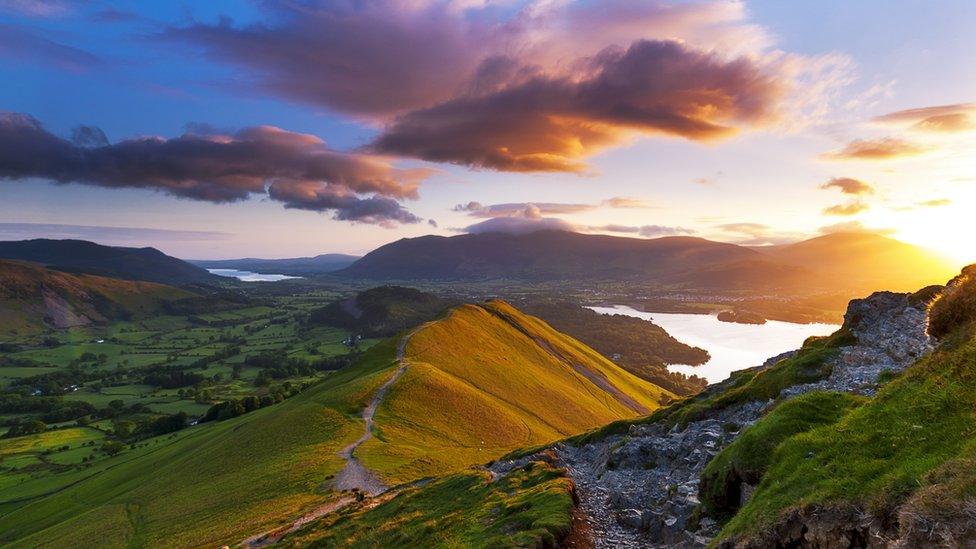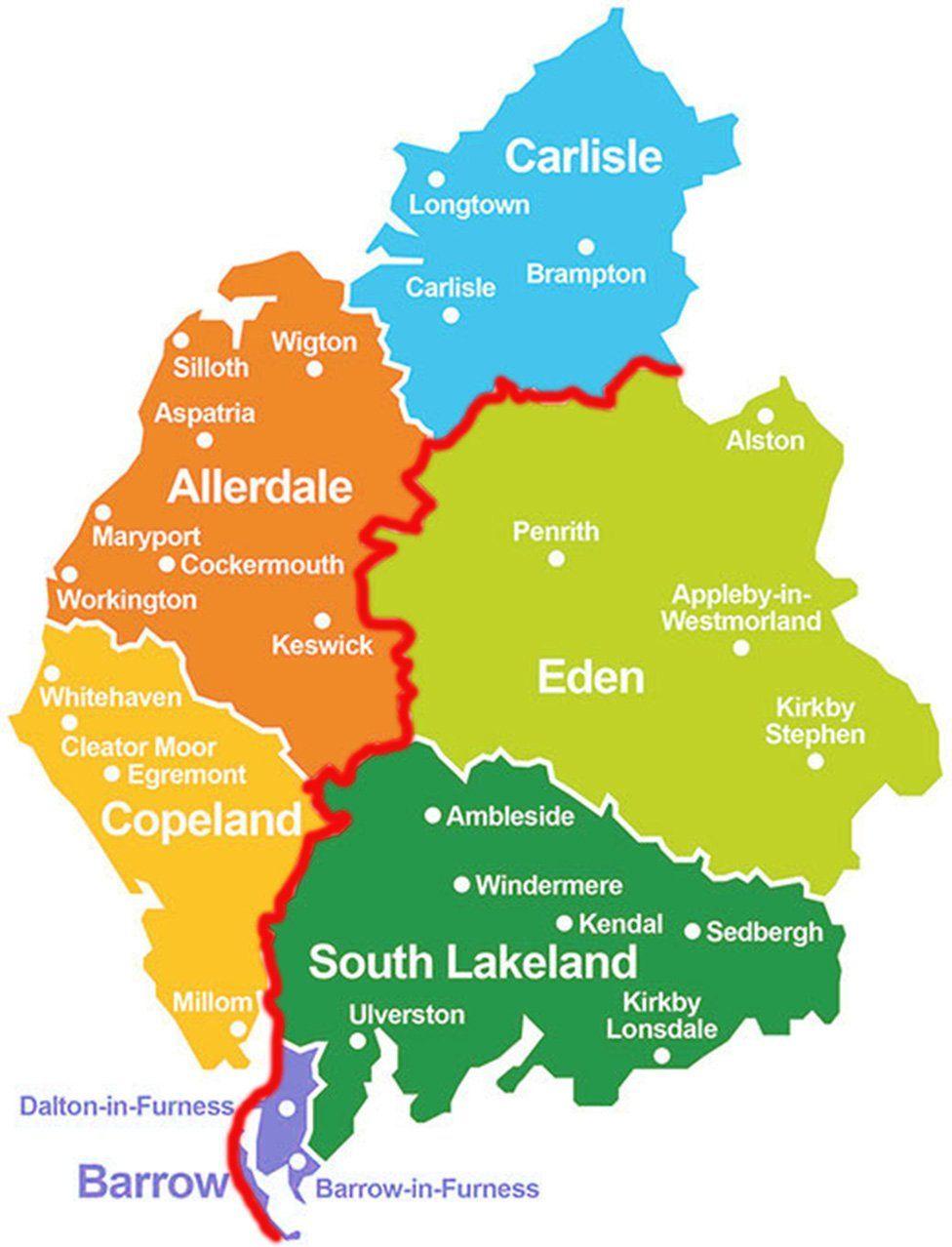Election 2022: The major shift in Cumbria's political landscape
- Published

The shake-up means the end of the six district councils and county council
Its lakes and fells may be immovable, but 2022's elections mark a big shift in Cumbria's political landscape.
When the county's voters go to the polls on 5 May they will be deciding who sits on two new councils.
But although they have never existed in the new forms, their names have older roots.
Cumberland will cover the current districts of Carlisle, Allerdale and Copeland, while Westmorland and Furness is made up of Barrow-in-Furness, South Lakeland and Eden.
Unlike the current two tier district and county structure, the councils will run every service from bin collection to social services.
This does mean the end for the six district local authorities and county council that have governed Cumbria since 1974 - but not immediately.
The new councils will exist as shadow authorities for the next year, before taking over in April 2023.
In the short term, that means a reorganisation aimed at make local government more efficient will actually produce a potentially bewildering range of authorities, with even more sitting councillors.
It will certainly see some of those elected to the new councils sitting simultaneously on older authorities for almost a year and, controversially perhaps, claiming allowances for up to three council roles.
This is a means to an end though as understandably the two new councils need political leadership to make the takeover as smooth as possible.

The new council structure is a rough east-west split
The reforms have not been without contention. The Labour leadership on the county council tried to mount a legal challenge to them. But that has now failed.
There is a suspicion in Labour ranks that the division of the county into two councils was designed to give the Conservatives political advantage but, whatever the motivations were, the parties now have to fight on those boundaries.
Both look to be keen contests, and it is far from certain who will take control of the new authorities.
Voters in Cumberland will be electing 46 councillors, using the existing county council wards.
On the basis of the last county council elections in 2017, the Conservatives would be in current control of 23 of them, with Labour having 18, Independents three, and the Liberal Democrats two.
However, that poll came with the Conservatives riding high, before Theresa May's General Election campaign imploded and support declined.

Cumbria County Council has been in existence since 1974
Given current national polling, concerns over the cost of living and the ongoing fallout from Downing Street parties, Labour will hope that they can prevent the Conservatives taking control.
Local factors always play a part though and the Conservatives have been keen to attack the record of Labour and the Liberal Democrat administration of the county council.
In Westmorland and Furness, 65 councillors will be elected in newly drawn wards, making it harder to assess the current state of the parties.
Given their strengths on the existing councils though, it looks like the Liberal Democrats and Conservatives will be fighting it out for control.
The Lib Dems are quietly confident that there is enough residual hostility to Boris Johnson's government for voters to punish the Tories at the polls.
Labour might have a part to play though as they still have some strong support in Barrow.
If either the Conservatives or Lib Dems fall short of control, they, or some Independents, could be the kingmakers.
In both new authorities the councillors will serve for five years, but there is just a chance that Cumbrians might be going to the polls again before too long.
The government says it will also be looking to create a countywide mayor who would work with the two new councils in a combined authority.
No date has yet been set for that to happen, and the continuing appetite for it in Cumbria may depend on the outcome of this May's election, and what the new councils decide they would like in the way of a devolution deal.
It will also be up to those new councillors to prove that this reorganisation of local government in Cumbria can deliver value for money and establish a structure that works for all communities.

POSTCODE SEARCH: Is there an election in my area?
WHAT'S HAPPENING WHERE: Really simple guide
ENGLAND: Simple guide

Follow BBC North East & Cumbria on Twitter, external, Facebook, external and Instagram, external. Send your story ideas to northeastandcumbria@bbc.co.uk, external.

